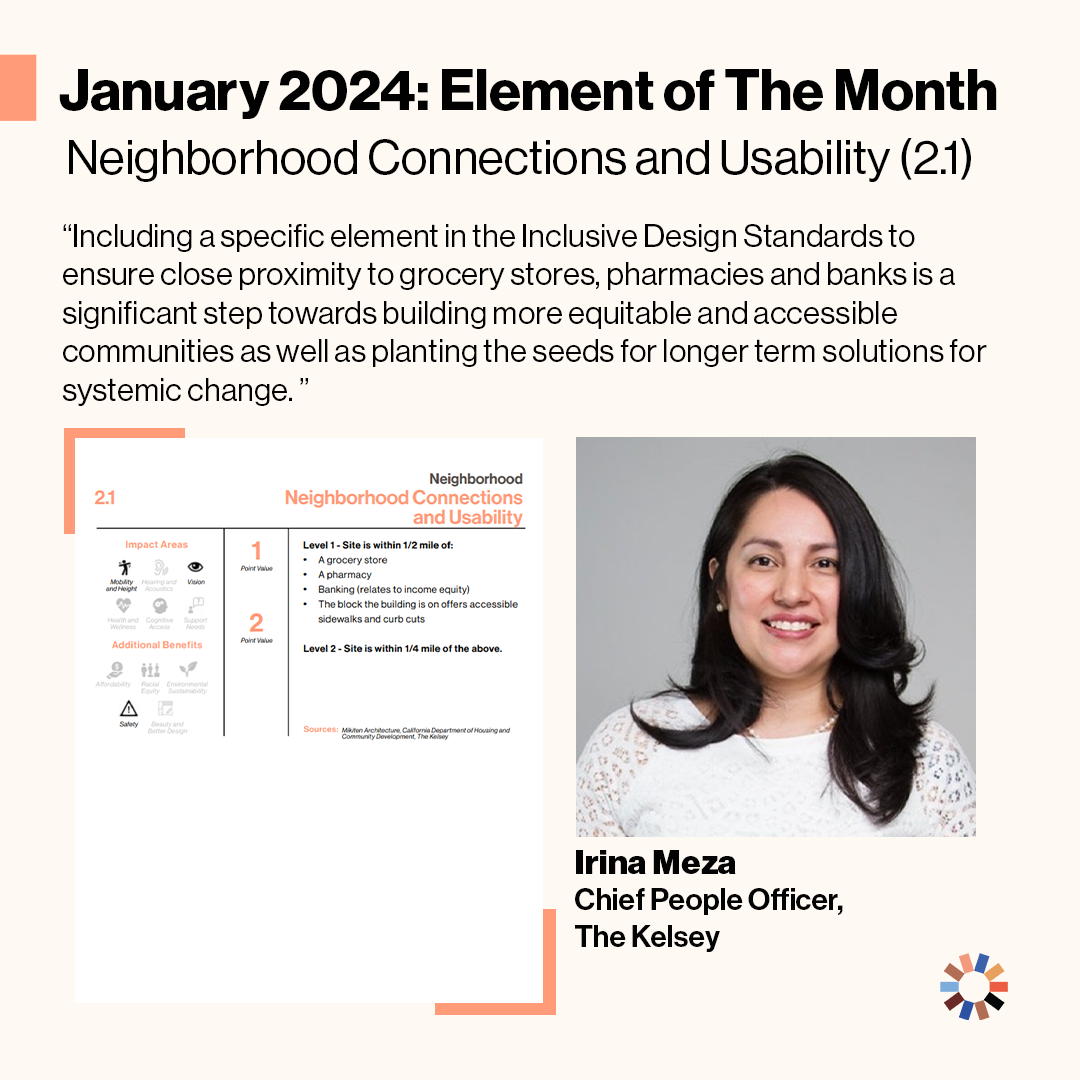The Inclusive Design Standards equip designers, builders, and developers with guidelines and frameworks for disability-forward housing creation. They highlight cross-disability accessibility and design decisions that are anchored in inclusion. Each month we feature one of our partners and the Element they’re most excited about.
Name / Affiliation: Irina Meza/Chief People Officer / The Kelsey

For January’s Element of the Month, we’re thrilled to feature Irina Meza, The Kelsey’s Chief People Officer. Irina’s Element, Neighborhood Connections and Usability, showcases the importance of building communities where residents can easily access community resources like grocery stores, banks, and pharmacies. Building housing close to valuable resources and designing neighborhoods with features that help people access them is crucial for creating disability-forward communities where residents are able to thrive.
Name of Element: Disability-forward Element (2.1) - Neighborhood Connections and Usability
Description: Provides residents in the community with connectedness to outside resources
Design Category: Site
Impact Area(s): Mobility and Height
Design Category: Site
Impact Area(s): Mobility and Height
Additional Benefit(s): Safety
Why is this element important to you, personally or for the project?
Neighborhood Connections and Usability are important to me personally as this element includes ensuring there is closer access to a grocery store, pharmacy, banking and accessible sidewalks and curb cuts. Many low income and historically uninvested communities of color live in areas with food apartheid where there is a lack of access to healthy, affordable foods and where there are no grocery stores. Lack of access to pharmacies means communities have less access to medications and essential services including immunizations, diagnostic testing and over the counter medications. Further, not having access to banks creates barriers to financial resources such as checking and savings accounts creating financial disparities where people are forced to pay higher fees when cashing checks because they do not have bank accounts. Including a specific element in the Inclusive Design Standards to ensure close proximity to grocery stores, pharmacies and banks is a significant step towards building more equitable and accessible communities as well as planting the seeds for longer term solutions for systemic change.
How would you explain this element to a 2nd grader?
Everyone needs access to healthy, affordable foods, medication and banks. Some people live in areas where their neighborhood was specifically designed to not have grocery stores, pharmacies or banks. Having grocery stores, pharmacies, and banks close to where people live makes it easier for people and families to get healthy foods, get medicine when they are sick and get access to their checking and savings account.
What recommendations would you make to someone designing a disability-forward housing project (related to the design standards)?
Designing disability-forward housing involves not only utilizing Inclusive Design Standards but also includes thoughtfully and meaningfully involving communities most impacted by the lack of affordable, accessible housing. Design standards and recommendations are only one part of the solution. We must intentionally involve community voices of both people with and without disabilities to ensure housing being built is accessible, inclusive and equitable. When we do not include people who are most impacted we are often designing for exclusion even when the intent is to do the opposite.
